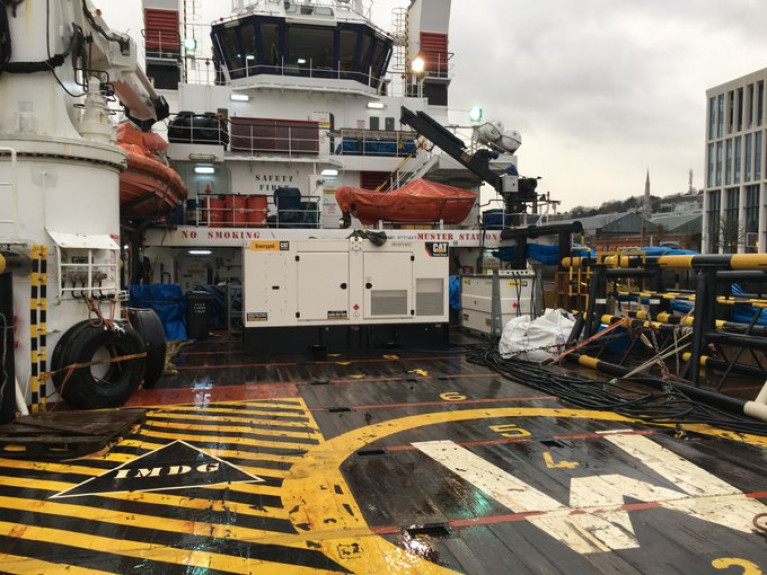Displaying items by tag: Mainport New Ship
Cork Based Mainport Group Newly Acquired Ship Dry Docks for New Role
Cork based Irish Mainport Holdings acquisition of a five year old utility and offshore supply vessel from Africa that arrived in late 2020 to the southern port, has since relocated downriver to lower Cork Harbour for drydocking, writes Jehan Ashmore.
The Mainport Group which provides marine services to ship-owners, oil and seismic survey companies, as Afloat previously reported, announced it had entered into the Offshore Wind Sector with the investment of the 2015 built Oya. The vessel's dimensions are the following: length (50m), beam (13.5m) and a draught of (4.3).
Afloat has identified Oya's keel was laid down in 2014 and the newbuild was completed the following year at the Turkish shipyard of Aksoy Gelibolu. The vessel has been described as a Utility and Supply vessel (with a bollard pull of 35 mt).The ship has a DP 2 system, quieter and economic diesel-electric engines and with FIFI 1 and SPS notation for 35 (crew and other personnel) all accommodated in 19 cabins.
The Marshall Islands flagged Oya had previously been working in waters off the Ivory Coast in west Africa before making a delivery voyage to Ireland. This involved an en-route call to Las Palmas in the Canary Islands with an arrival to its new owners homeport in mid-December.
Cork Dockyard located in Rusbrooke close to Cobh, is to carry out the 1,240 gross tonnage ship's 5-year special drydock survey. Among the vessel's extensive features is a deck crane fitted on the aft work deck. In addition for the new ship's role, there are plans to convert the ship which Mainport last month said will see a 'top-class survey vessel in the new year'.
During December's berthing in Cork City Quays, Oya was in the company of some of the Mainport fleet, the seismic support ship Irish Cedar and tug Celtic Isle. These vessels remain berthed at North Customs Quay from where Afloat tracked the Oya which yesterday morning made a short passage along the River Lee through Lough Mahon and then to enter Cork Dockyard.
Following the closure of the largest drydock in the Irish State by the Dublin Port Company to facilitate the Alexandra Basin Redevelopment (ABR) Project, this leaves only Cork with the 'ship' dockyard facility. This is operated by another of the city's marine companies, the Doyle Shipping Group which has operations throughout the island.
At the same time of last year's Mainport expansion into the offshore wind industry, the group also brought a share in Wicklow based offshore services company, Alpha Marine. Among its activities is the servicing of the nearby Arklow Bank Wind Farm.
























































